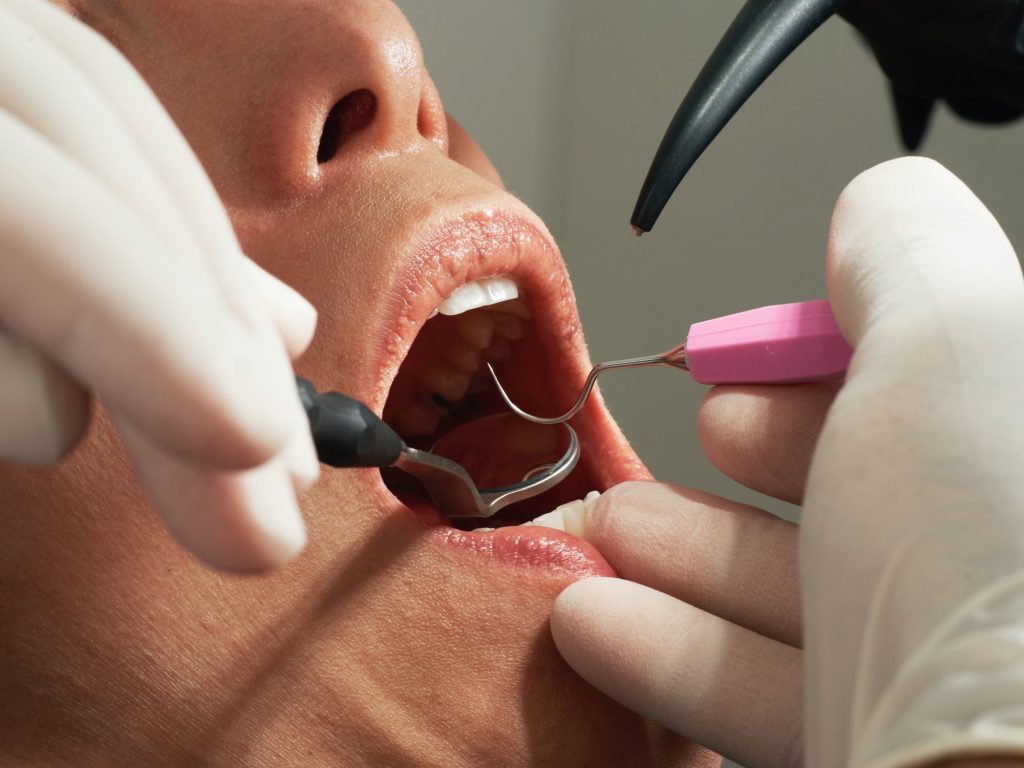
When someone’s said to have “deep pockets,” you might assume that they’re well-off, or that they have a lot of resources or connections. However, if it’s your periodontist who says you have deep pockets, you’re likely going to need to rethink some things about your oral health.
By the time your periodontist tells you your pockets are too deep, it’s too late to do anything about it with brushing and flossing, which is why they’ll likely recommend a course of treatment. “But wait,” you might say, “what pockets are we even talking about?”
Today, we’ll take you on a crash course as to what periodontal pockets are, how they form, and what you and your periodontist can do about them.
The What and Why of Periodontal Pockets
You probably already know that plaque, which contains bacteria, can collect on your teeth and harden into a substance called tartar if it’s not removed by regular brushing. What you may not know is that plaque doesn’t just attach to the bits of your teeth that you can see. It creeps down past your gum line and hardens into tartar there, too. And if the tartar’s left untreated, the bacteria that call it home will begin to irritate your gum line, making your gums inflamed and irritated. They’ll begin to pull away from your teeth. When that happens, the spaces that are created are called pockets.
If the periodontal pockets are still left untreated, the increased space means more room for plaque to accumulate and harden. The early stage of periodontal disease is called gingivitis, but as it worsens into periodontal disease, the risks can become very serious.
Are Periodontal Pockets Dangerous?
Periodontal pockets make it much easier for periodontal disease to develop, and while you might not initially notice anything worse than bad breath, gum disease can put you at increased risk for conditions like:
- diabetes
- heart disease
- stroke
- respiratory disease
- rheumatoid arthritis
How Does a Periodontist Treat Periodontal Pockets?
By utilizing a variety of different treatments, your periodontist in Pittsburgh can help reduce the size of your periodontal pockets to allow the gums to once again become snug against your teeth. The treatment they recommend will depend largely on the scope of your existing pockets, but there are both non-surgical and surgical options to consider.
Non-Surgical Solutions
Scaling and Root Planing
Scaling and root planing is the process of professionally and carefully removing the plaque and tartar buildup from beneath your gum line. We cannot stress enough: this must be done by a trained dentist or periodontist. The scaling portion of the process refers to the physical removal of the plaque and tartar, while root planing helps smooth the surface of the root of your tooth, providing fewer grooves for bacteria to hide in while simultaneously creating a fresh surface to encourage gum reattachment.
Topical/Oral Antibiotics
If the bacteria in your periodontal pockets are contributing to infection, your periodontist in Pittsburgh may recommend the use of either topical or oral antibiotics.
Surgical Solutions
Gum Flap Surgery
This form of treatment involves making tiny incisions in your gum line to allow the periodontist to pull back the gums and clean the tooth more deeply and effectively. After the cleaning and removal of any dead tissue, the gum is secured back in place, allowing it to heal and promote the development of healthy gum tissue.
Guided Bone Regeneration
Periodontitis can result in the loss of your bone or soft tissue. When this happens, it may be necessary to encourage the regrowth of those lost tissues to support your teeth and gums. This can be achieved in several different ways, such as the insertion of a special membrane or the use of bioactive gels.
Soft Tissue Grafts
As periodontitis progresses, it can force your gums to recede away from your teeth. Gum grafting places a section of fresh tissue over the cleaned and prepared recession, encouraging the growth of healthy new gum tissue.
Periodontal and Dental Implant Solutions
We understand that a trip to see your Pittsburgh periodontist isn’t necessarily one that most people queue in line for, but we also can’t understate how important it is. Regular appointments with your periodontist will help keep periodontitis at bay.
If you’ve already begun developing periodontal pockets, your periodontist can provide you with a customized plan for treatment. At Periodontal and Implant Solutions, we’re conservative in our treatment recommendations, which means that we recommend only what you actually need to achieve your goals for oral health.
To learn more about services from Periodontal and Implant Solutions, give us a call at 412-787-7555 or send us a message online.
